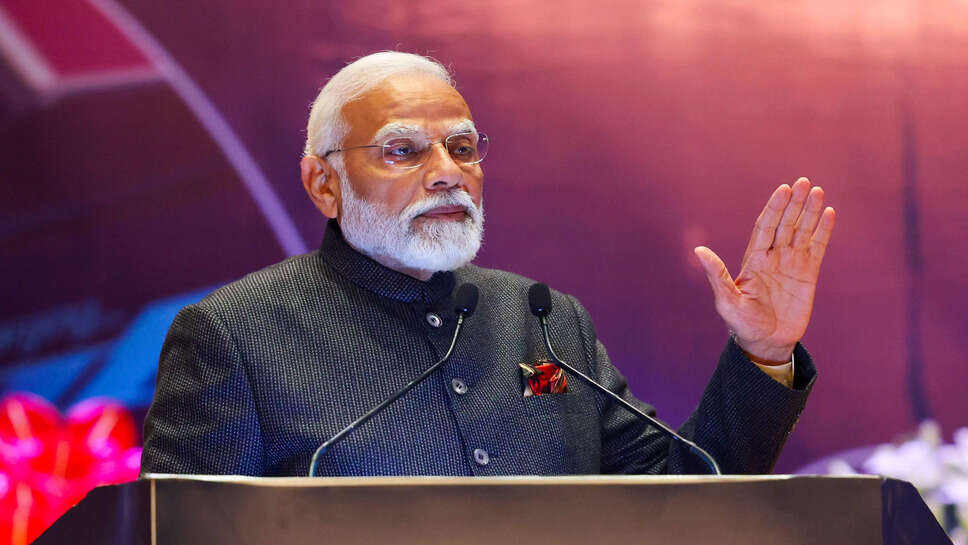PM Modi Unveils ₹7,000 Cr Projects Across Bengal and Bihar Ahead of Polls

In a major display of infrastructure and development-focused statecraft, Prime Minister Narendra Modi will be inaugurating projects totalling around ₹7,000 crore in West Bengal and Bihar today. This announcement comes on the heels of pending elections in both states, marking a high-stakes moment that intertwines governance achievements with political messaging.
1. What’s Being Launched — Quick Overview
PM Modi’s itinerary includes a mix of infrastructure, urban development, energy, connectivity, education, and healthcare initiatives. The breakdown includes:
-
Power plants and transmission upgrades
-
Road, highway, and expressway sections
-
Water supply and sewage treatment systems
-
Rail and metro expansions
-
School and university campus development
-
Hospital equipment and medical infrastructure
Such a wide-ranging slate reflects the government’s ambition to deliver visible change—and send a strong pre-election signal.
2. Why the Timing Matters
With West Bengal scheduled for assembly elections in early 2026 and Bihar set to vote later this year, this rollout aligns with a calculated electoral strategy: showcasing deliverables ahead of campaigns. In BJP parlance, this is a “governance-first” narrative aimed at influencing voter sentiment by emphasizing development over rhetoric.
3. West Bengal: Breaking BJP Ground in a Tough Landscape
Bengal has been historically resistant to BJP penetration. Yet this investment—spread across urban areas like Kolkata, Howrah, Siliguri, and rural and tribal regions—holds dual value: it provides genuine infrastructural improvements while offering BJP soft power gains.
Projects include:
-
New four-lane highway stretches improving intra-state connectivity
-
Metro expansion phases in Kolkata suburbs
-
Renewable energy integration in existing power grids
-
Wastewater treatment facilities in district towns
Each is intended to deliver improved daily life experience—and to drive local votes.
4. Bihar: Infrastructure as the Political Linchpin
Bihar has long been positioned as a developing state yearning for investment. Projects now include:
-
Flyovers and bypasses in Patna and surrounding cities
-
Solar energy parks and grid-renewal works
-
High-end classrooms and labs in universities
-
Mobile medical units and dialysis centers for under-served areas
These visible additions—built, inaugurated, and claimed—are aimed at bolstering feelings of progress and choice ahead of voting.
5. The Political Message Behind the Projects
-
Competence vs. Opposition: BJP aims to show delivery that overpowers state-level criticisms—accusing local governments of slow progress and red tape.
-
Contrast across borders: With South Bengal close to East Bengal in mindset, and Bihar straddling the Gangetic belt, an aura of progress could shift voter perceptions widely.
-
Narrative control: Launching projects just before elections lets PM place the value-on-ground narrative ahead of pollsters, effectively rewriting local debates around governance.
6. Local Reactions: Enthusiasm Mixed with Skepticism
Supporters praise the projects for delivering long-overdue public goods—better roads, power reliability, hospital access. In local councils, images of rural electrification, improved connectivity, and upgraded infrastructure have generated goodwill.
Critics and opposition parties question:
-
The authenticity of the claims: some say existing assets are being relabeled as “new” projects.
-
Whether these launches reflect speeded-up timelines near polls—and whether the benefits will last in politically hostile regions.
-
If local governments will have the capacity to maintain the high-end infrastructure post-launch.
Local politicians across party lines have scrambled to claim credit, reflecting the jittery atmosphere as launch day approaches.
7. Upshot for Key Sectors
-
Infrastructure & Mobility: Improved roads, flyovers, and metro extensions promise shorter commutes and better connectivity—especially in rapidly urbanising towns.
-
Energy Security: Transmission upgrades and renewable components should help in reducing outages and meeting growing demand.
-
Healthcare: New equipment and medical centers enhance service reach, especially important in rural Bihar.
-
Education & Skilling: Campus developments could improve student outcomes and loosen migration pressure to metros.
8. Sustainability and Maintenance Challenges
The longevity of these projects depends on government upkeep. Poor alignment between planning and local presence has in the past undermined both infrastructure and political trust after initial fanfare. Ensuring budgetary and administrative continuity will be essential.
9. How It Ties Into Larger Political Chessboard
-
Kolkata vs BJP: Despite opposition control, central projects in Bengal bolster a parallel development narrative.
-
Bihar’s Flip Potential: With the Lok Sabha and state polls looming, migrant and local-worker constituencies in Uttar Pradesh/Bihar border districts might pivot based on development feel.
-
Narrative Leverage: BJP may use the launches to claim both ruling legitimacy and legislative activism—while opposition parties could question execution post-launch.
10. Poll Strategy Through Infrastructure
This isn’t just about laying concrete. It’s about metaphorical and media messaging. As photos of Modi cutting ribbons flood news channels, the BJP narrative machine will assert progress, bridge-building, and government responsiveness—drowning out debates on scandals, local issues, or questions about federal structure.
Opponents will have to confront both the optics and implementation on the ground.
11. Public Sentiment: Aspirational vs. Anxiety
Surveys in recent months have suggested rising optimism in both Bengal and Bihar—though cost-of-living and unemployment continue to worry sections of the electorate. These projects may do just enough to pivot uncertain voters toward Modi's optimism-based messaging.
At the same time, lasting change relies on sustainability. If hospitals remain understaffed or metro systems fall into disrepair, voters may feel cynicism soon after inauguration.
12. Governance Meets Politics
PM Modi’s unveiling of ₹7,000 crore in projects across Bengal and poll-bound Bihar is simultaneously a development drive and calculated electoral gambit. It signals the BJP’s strategic readiness to punch into historically resistant regions—using governance levers rather than just politicking.
Whether this translates to votes or backfires due to executional issues remains uncertain. The government’s challenge now is not in the ribbon-cutting but in maintaining power, purse, and deliverables in the long term.
The coming weeks will show which narrative wins: development delivered, or politics of appearance.
.jpg)